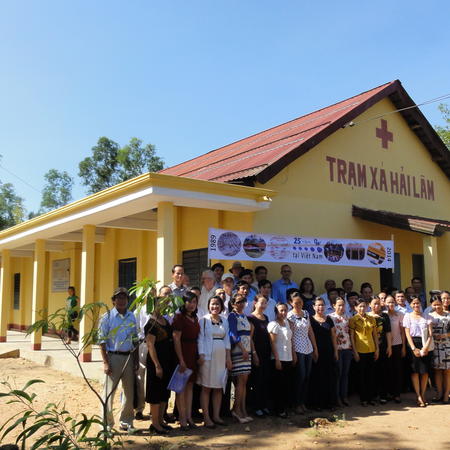- English
- Français
- Tiếng Việt
Environment & Habitat
The man made and natural environment: interdependence between human settlements and local resources
The development of human settlements cannot be dissociated from the surrounding natural environment and its resources, and it is clear that their link and interdependence has become increasingly critical. We have to be more sensitive and careful about the way our towns and homes develop if we are to avoid irreversible damage to the environment. Over consumption of natural resources to meet shelter needs, increased built up areas, growing road and service networks, actions which create pollution, all urgently require strategies to reduce the negative impact of our built environment on the natural environment, actions that can assure sustainable use of resources and in the end, a sustainable planet.
Already, the depletion or destruction of natural resources in many instances means that practices and resources that people have relied upon over centuries have quite suddenly ceased to be available or viable and need to be replaced with new or alternative resources and techniques.
DWF makes addressing and managing the interdependence between human settlements and the environment a core issue in all its projects.
DWF promotes:
- Reduced environmental degradation caused by human settlements through the introduction of selective changes to existing practices that lead to a reduction in resource over-consumption or pollution.
- Sustainable use of local resources for shelter needs developed through training and demonstration.
- Taking account of climate change and its impact.
Projects include:
- The woodless construction programme in the countries of the Sahel in West Africa which develops building skills using earth vaults and domes. Woodless construction reduces the consumption of scarce tree resources and makes building decent durable homes and facilities easier for the rural west African population; see Burkina Faso
- Studies carried by DWF examine the links between man’s shelter and the natural environment, and propose strategies and actions that reduces negative effects: for example in Tanzania, DWF advised how building needs on coral islands can be modified so as to reduce harmful over-consumption of coral which destroys the marine environment on which inhabitants depend for their livelihood; in the Sahel, habitat and environment studies have assessed the impact of existing building practices on the environment and identified alternative strategies.
- Research and practical demonstration of how local building resources can be used durably to meet shelter and infrastructure needs has been undertaken in Pakistan, Laos, Iran. Publications include works on indigenous building methods, and on building with earth, thatch, bamboo and earth vaults and domes.
In 1976, DW produced the exhibition “Indigenous Building and the Third World” in Tehran (Iran) which was then shown at the first UN Habitat conference – Habitat I - in Vancouver (Canada), outlining lessons that can be learnt from indigenous practice to meet contemporary needs. This underlying theme remains pertinent in the face of today's increasing globalisation and the accelerating pace of change and of aspirations.











